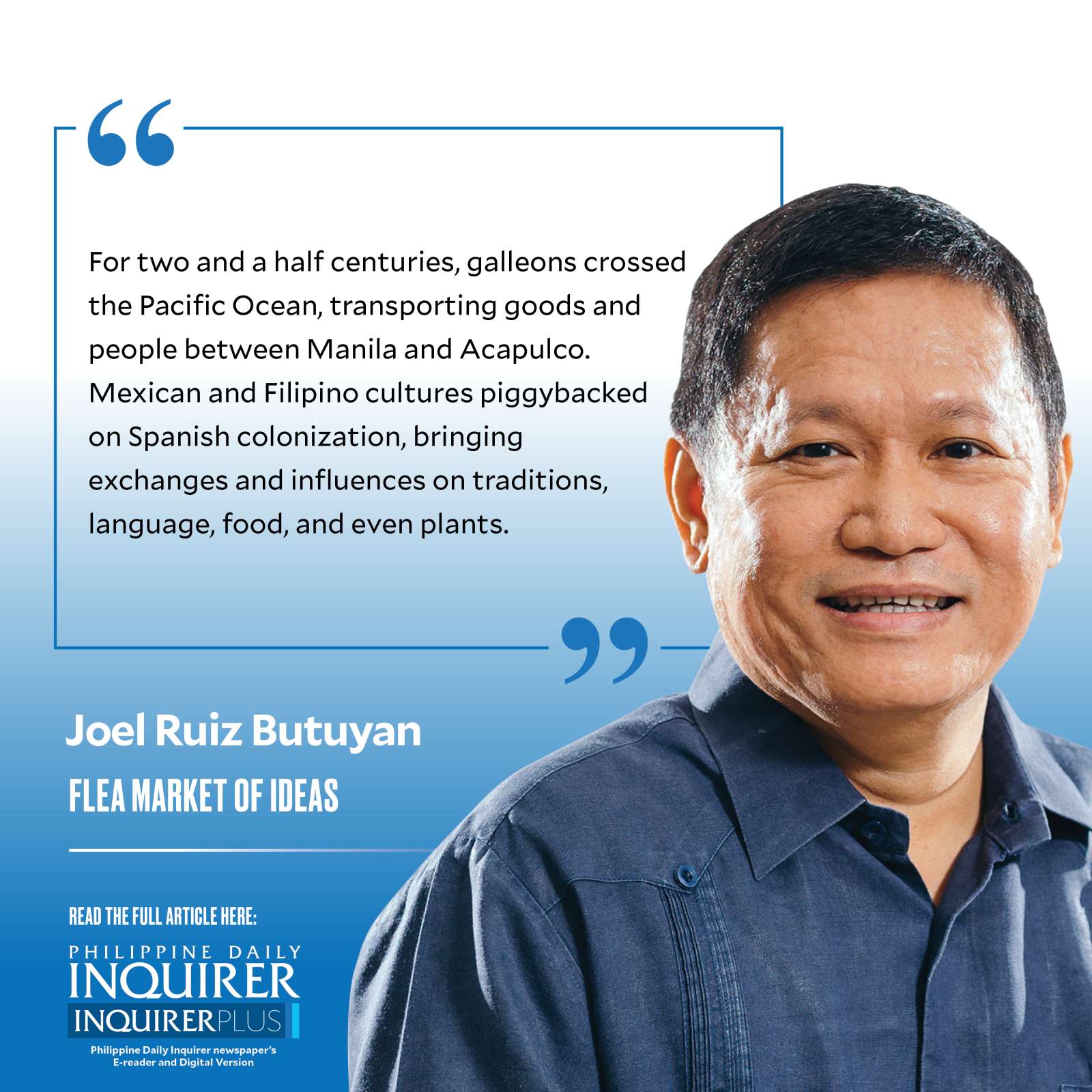Our Mexican connection
We have been taught that Philippine society has largely been defined by the influences of two colonial powers that ruled our islands. Referring to our occupation by Spain and the United States, we are said to have spent 300 years in the convent and almost 50 years in Hollywood. It turns out that there was a third foreign land that deeply influenced our way of life for 250 years. That country is Mexico.
This was my takeaway from the exhibition entitled “BUEN VIAJE: Manila-Acapulco-Manila” which opened last May 5 and will run until June 23, 2024. It is held at the Pintô Art Museum in Antipolo City in cosponsorship with the Embassy of Mexico. The exhibition celebrates 250 years of the galleon trade, by presenting artworks, artifacts, antique maps and prints, lectures, and food that feature how the Philippines and Mexico deeply influenced each other through centuries of trade.
From 1565 to 1815, the Philippines and Mexico were umbilically connected because of the galleon trade. The Philippines and Mexico were both Spanish colonies in those years. Mexico was the center of “Nueva España,” comprising of the Spanish colonies in what is now Southwestern US (California, Florida, and Louisiana), Central America, the Caribbean, northern parts of South America, and the Pacific islands of the Philippines, Guam, and Taiwan. The Philippines was under the administrative control of the Spanish viceroy based in Mexico.
For two and a half centuries, galleons crossed the Pacific Ocean, transporting goods and people between Manila and Acapulco. Mexican and Filipino cultures piggybacked on Spanish colonization, bringing exchanges and influences on traditions, language, food, and even plants. History professor Ambeth Ocampo shared in his lecture entitled “Mexico Under Our Skin,” that 15 of the 18 vegetables that make up the folk song “Bahay Kubo” were imported into the Philippines from Mexico during the galleon trade. In fact, fruits that we regularly eat for dessert and which we think are native, were actually transplanted from Mexico—pineapple, papaya, avocado, guyabano, atis, caimito, guava, chico, kamatsile, kasoy, tiesa, sineguelas, and aratilis. Even kamote and cacao (which gives us tsokolate) originally came from Mexico. In an earlier column in this paper (“After the Manila Galleons,” 3/14/24), Ocampo likewise shared that common Filipino words like “nanay” and “tatay” are of Mexican origin. The food that are served to us as tamales and champurrado are actually known by the same names in Mexico, also according to Ocampo.
Mexico also benefited immensely from the exchange. Filipinos slaves and sailors brought with them their fermentation and distillation techniques in producing tuba and lambanog from coconuts. Mexicans adopted the techniques, enabling them to produce tequila from their native agave plant. Philippine mangoes, tamarind, coconut, and rice were brought to and propagated in Mexico. According to some scholars, thousands of Filipinos settled in western Mexico during the galleon era, intermarrying with Mexicans. It’s said that Filipino influences are visible even to this day in places like Acapulco and Colima.
A central part of the ongoing exhibition is the history of the Nuestra Señora de la Paz y Buen Viaje (Virgin Mary of Peace and Good Voyage). Also known as Our Lady of Antipolo, it is an image of the Virgin Mary made of dark wood, that was brought to the Philippines from Mexico in 1626. During the galleon voyages, the statue was prayed to for safety from piracy and raging storms. The wooden statue is enthroned in the Antipolo Cathedral, and to this day it is highlighted by pilgrimages.
The impact of the galleon trade was, however, not only limited to the Philippines and Mexico. Dr. Joven Cuanang, proprietor of Pintô Art Museum, explained that the years of the galleon trade “was rich in economic and cultural exchange between the east and the west. Manila and Acapulco were entrepôts in this first transcontinental maritime economic activity in the world. The products of the East particularly, China, Japan, India, and the Philippine islands and the rest of Southeast Asia were brought to Manila and on to Acapulco to reach the western world. In their return trip, products from Mexico, Spain, and Latin America were loaded in Acapulco and brought to Manila. These twin cities were bustling with economic activity. Manila became a ‘melting pot’ in the Orient, a high point in its history. Manila was the first ‘true world city.’”
The galleon trade stopped when Mexico rebelled against Spain, until it gained its independence in 1821. By that time, however, Dr. Cuanang said that “[o]ur language, manners, cuisine, clothing, foliage, and many more have now become entwined, and had become part of each of us. We both struggled to become free from Mother Spain, and our histories are parallel in many ways as we have also assimilated the richness of the Iberian culture.”
—————-
Comments to fleamarketofideas@gmail.com





















